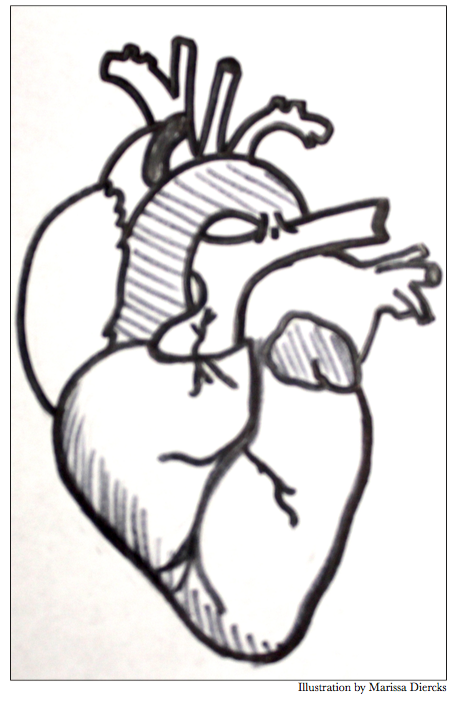We should fund research based on numbers, not noise
By: EVAN CARLEN
Staff Writer
What could be the start to investing in potentially life- saving research? Most people would throw their money at the biggest killer, right? Wrong.
People give money to organizations that make the most noise instead of those that save the most lives.
What this means is that the majority of donated money will go into cancer research instead of elsewhere — despite the fact that the progress of cancer research has been less than outstanding in the past few years. Why is that?
Cancer makes so much noise because it is a degenerative disease that shows symptoms over time, but the silent killer — heart disease — will kill more people this year than all kinds of cancer combined.
With this knowledge, our concern needs to shift toward funding heart disease research instead.
When asked about the victims of heart diseases such as Coronary Heart Disease (CHD) and Microvascular Disease (MVD) most people picture men.
Not surprisingly, medical stereotypes painted the wrong picture again. According to the National Heart Institute, since 1984 more women have died from heart disease than men, and the gap between the death count continues to grow wider.
This is because over the last 60 years, research on care and prevention has been aimed at men who primarily suffer from CHD. This research hones detection and treatment methods such as angiograms and stress testing, but these methods are only aimed at half of the population.
According to the National Heart, Lung and Blood Institute, women suffer primarily from MVD, which is all too often overlooked by CHD-aimed detection methods.
If this is the case,why is funding notpouringintothepocketsoflabs aimed toward MVD detection?
Year after year stories are published for the public on the falling percentage of heart disease related deaths.
These stories make our insides get all fuzzy and we go to sleep thinking these percentages are widespread.
The truth is they are not, and the trend will continue until initiative is taken by us — the people whose tax dollars fund research.
According to the Centers for Disease Control and Prevention, nearly five times as much funding goes toward breast cancer research each year than heart disease research despite breast cancer victims being less than a tenth of those of heart disease, let alone MVD.
Since when are the lives of cancer victims, my mother included, valued more than those of heart failure victims?
The facts do not lie: heart disease is a serious problem for all of us, especially women. Every life is precious and we need to put the money, time and effort where women need it most —in heart disease prevention efforts. Funding heart disease research will pay off in the long-run, and it will save the lives of so many people. At the end of the day, that is a worthy investment, and the pursuit of heart disease prevention in women will definitely pay off.











